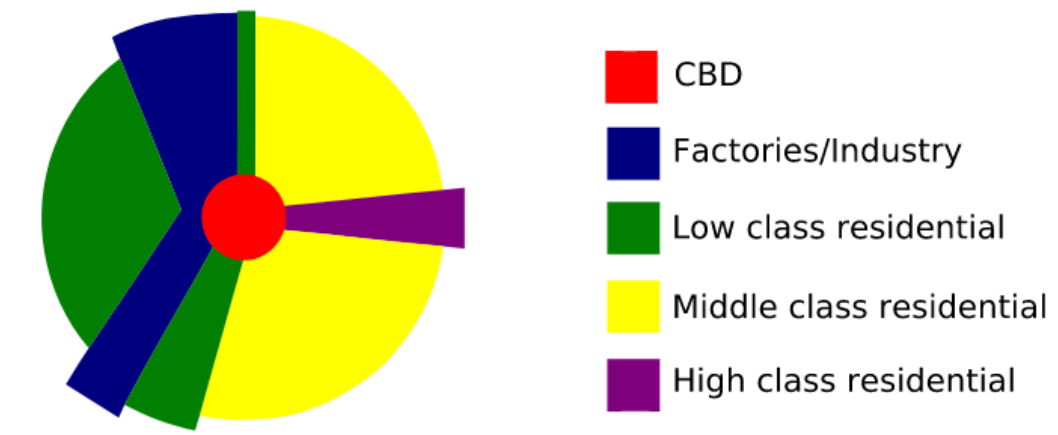AP Human Geography Multiple Choice Help (MCQ)
4 min read•june 18, 2024
Harrison Burnside
AP Human Geography 🚜
320 resourcesSee Units
Logistics of the Exam❓
For Section 1, you have 60 minutes to answer 60 MCQs, and this section is weighted at 50% of your exam score! To learn more about MCQs and go more in-depth on the process, make sure to check out the Score Higher on AP Human Geography 2024: MCQ Tips from Students guide 📖
For Section 2, you will have 75 minutes to answer 3 Free Response Questions all equally weighted to make this section weighted at 50% of your exam score! (These 2 sections add to 💯% of your exam score). The Free Response Questions (FRQs) study guide goes into more detail about the logistics of Section 2, but this article will mainly cover Section 1: the Multiple Choice Questions.
The College Board has broken down how much each unit is weighted on Section 1 (in a normal AP Exam year), so make sure to distribute most of your studying time equally between the units! Here is that breakdown by unit:
APHuG Breakdown by Unit
| Unit | Exam Weighting |
| 1: Thinking Geographically | 8-10% |
| 2: Population + Migration | 12-17% |
| 3: Culture | 12-17% |
| 4: Politics | 12-17% |
| 5: Agriculture | 12-17% |
| 6: Urban Land Use | 12-17% |
| 7: Economic Development | 12-17% |
Major Strategies 💡
Here are some strategies that will immensely help you on the exam! This is not an exhaustive list and to get all of the strategies and information, check out the APHuG Ultimate Multiple Choice Question (MCQ) guide 📖
Elimination 🧐
- Instead of trying to find the correct answer to every question, try looking for incorrect answers and cross them out ❌
- Always cross out wrong answers as you go!
- If you can't choose, try looking for specific words in a question or answer that make it wrong.
- Always be picky 🤔 when selecting your answer
Mark It ⭕
- Sometimes you get a question that you are simply just stumped on 😥
- It happens to all of us. Don't feel bad about skipping a few 🙌
- If you really just don’t know the answer, make your best guess, circle the question so you can come back if you have time in the end, and then move on.
- The next strategy can help you move on quickly and get more of your Mark It ⭕ questions correct 🎉
Letter of the Day 🛑
- Pick 1 Letter of the Day (LOTD) before you even start the exam 🅱️
- When you use a single LOTD, you increase your probability of getting each individual question correct ‼️
- This may seem confusing in theory but if you have a four-question test and you bubble B for every answer, you have a 25% chance of getting all of the questions correct.
Rephrase ✍️
- Sometimes you understand the concept, just not the question 🤨
- A helpful trick is to take the question out of fancy 💃 AP language and into phrasing you understand 😊
- If the question says "A negative consequence of the internal migration of the United States of America is-"
- You could Rephrase ✍️ the question to "Bad effect of people moving inside of the USA is-"
For more strategies 👊 check out the full APHuG Ultimate Multiple Choice Question (MCQ) guide 📖!
How to Manage Your Time ⌛
Focus on the topic: when looking at a question, focus on the topic it is dealing with and try and recall everything you remember about the topic. Oftentimes it will help you come up with the correct answer.
If you have 60 minutes and 60 questions, this gives you one 1️⃣ minute per question. If there is one you are stumped on, use the Mark It ⭕ Strategy. If you have some questions that take you less than a minute you can come back at the end and try again. If not, it is just one point.
Remember, it's always better to get one hard question wrong because you skipped it than to get 5 easy questions wrong because you didn't have time.
Sample Questions for the AP HuG Multiple Choice Section
1. Early civilizations could usually be found around:
A. The coast
B. Other civilizations
C. Mountains
D. Rivers
E. Forests
Correct Answer ✅
D. Rivers; River-water could be used by ancient civilizations for energy and for drinking! Rivers also helped settlements be able to transport goods and move around.
2. Which of the following Urban Models is represented by the image?

Source: Rubinstein AP Human Geography Textbook
A. Hoyt Sector Model
B. Galactic City Model
C. Urban Realms Model
D. Latin American City Model
E. Burgess concentric zone model
Correct Answer ✅
A. Hoyt Sector Model; The Hoyt Sector Model has the distinctive High Class "sector" spine coming from the CBD to the outer area.
3. Which of the following is a nation state?
A. Japan
B. Mexico
C. Ghana
D. Russia
E. United States
Correct Answer ✅
A. Japan; Japan has high cultural homogeneity as well as a small land area and late stage DTM population.
Closing Thoughts 💭
The AP Human Geography Multiple Choice Section is totally Fiveable (see what we did there 😂) if you know all of the right information, and you know how to analyze and use stimuli effectively!
Browse Study Guides By Unit
🗺Unit 1 – Thinking Geographically
👪Unit 2 – Population & Migration
🕌Unit 3 – Cultural Geography
🗳Unit 4 – Political Geography
👨🌾Unit 5 – Agriculture & Rural Land-Use
🌇Unit 6 – Cities & Urban Land-Use
💸Unit 7 – Industrial & Economic Development
🧐Exam Skills
📚Study Tools

Fiveable
Resources
© 2025 Fiveable Inc. All rights reserved.